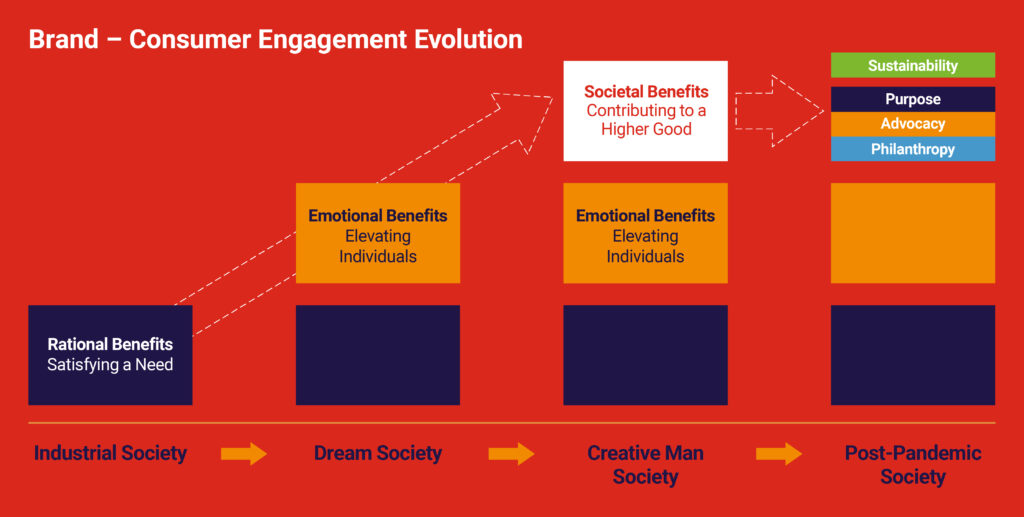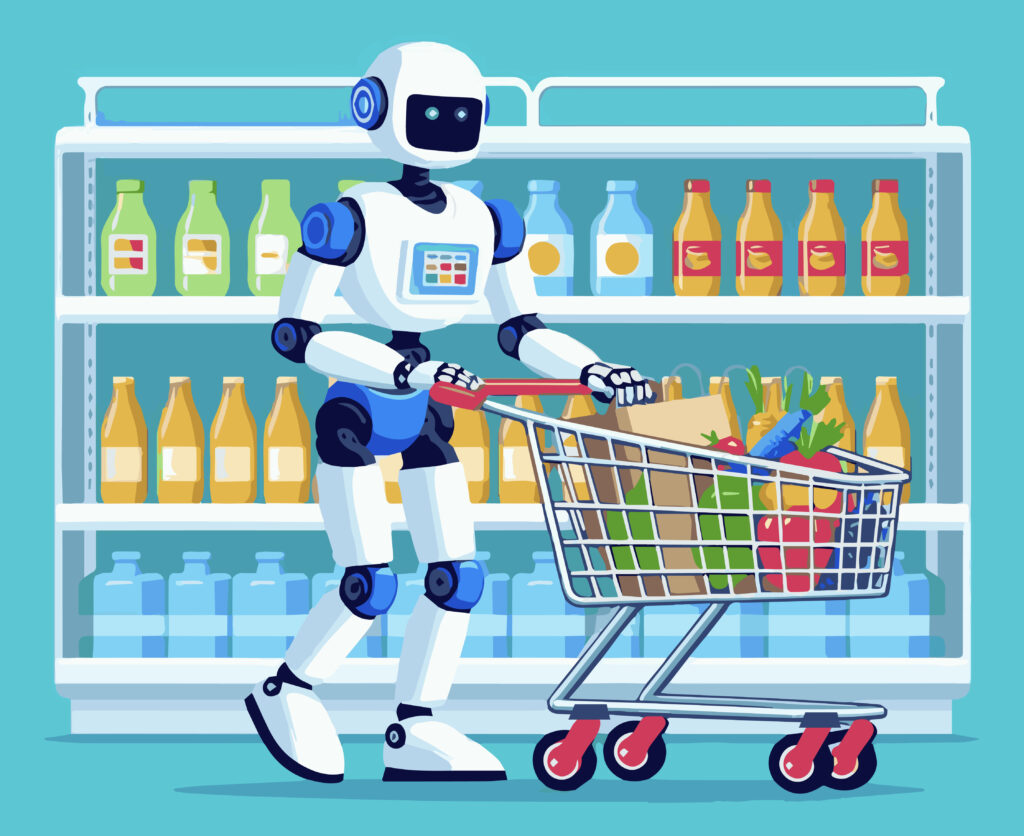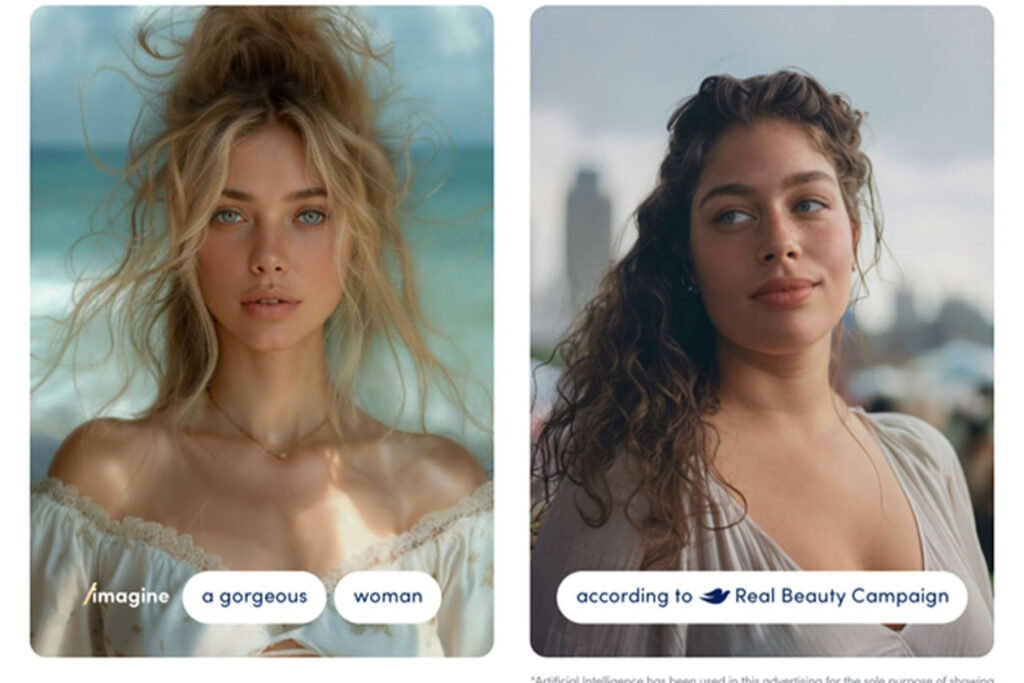Brand Purpose 21 August 2025
AI meets Purpose: How CPG Brands can stay human in a machine world
For more than a decade every brand has sought to define and live up to its brand purpose, yet, after the global pandemic, marketers seem to be turning away from purpose: this could be a big mistake, especially in the age of AI.
Purpose is at a crossroads, in fact, and AI may be one the forces that redefines it. Read on to explore why staying human might just be your brand’s smartest move yet…
What is Brand Purpose and why does it matter in the age of AI
In the words of Peter Field, purpose is a brand’s “commitment to goals other than improved profits or products”focused on contributing to positive social impact — whether in health, sustainability, human development or ethical business practices. (1)
In Consumer Packaged Goods purpose is often defined as the deeper reason a brand exists beyond making a profit: a guiding belief or mission that shapes what the brand stands for, how it behaves and the value it brings to people and society.
This latter framing widens the lens. Purpose isn’t just about social causes, it’s fundamentally about how a brand shows up in people’s everyday lives. Sometimes it’s about fighting climate change; other times it’s just about making someone feel seen, included or understood.
Both perspectives are valid and often work best together. The strongest brands take a clear internal purpose, deeply anchored to their proposition, and translate it into visible, meaningful action.
Nowadays purpose faces a new challenge: as AI pervades brand marketing, there is a risk of losing human touch. Automated content, chatbots and algorithmic decisions can easily drift into tone-deaf territory without something deeper anchoring them.
Over time, purpose has gone from strategic imperative to buzzword. But we believe that it now matters more than ever: it can, in fact, guide how AI is used, helping brands stay human, intentional and aligned with their values.

The evolution of Brand Purpose
Few topics have stirred as much debate in branding as purpose. Once a niche ethical concept, it has become a core part of brand and growth strategy.
It began in the 1970s with calls for businesses to serve society, not just shareholders. Over time, Corporate Social Responsibility became the norm and in 2011, Porter and Kramer repositioned purpose as a driver of business value, not just goodwill. (2)
Since then, and up until today, purpose has helped brands stand out, guiding not only messaging, but culture, innovation and customer experience. “Activist” brands like Patagonia and Ben & Jerry’s have shown how a strong purpose can shape identity and drive loyalty.

Consumers have played their part in accelerating this evolution in the early 2020s In 2019, in fact, over half of global consumers expected brands to take a stand on social issues, with 72% of Gen Z stating that this influences their purchasing decisions. (3)
Since then, this trend has only strengthened as revealed by several reports, including a Deloitte global survey in 2023 (4) which highlights that over 80% of Gen Z declare to have either boycotted or supported a brand based on its stance on an issue — social, political or environmental — in the previous 12 months.
More recently, purpose has been facing a reality check. While assumed as a powerful driver of long-term growth, thought-leaders like Peter Field have shown that it only works when it’s tightly connected to what the brand stands for and what matters to customers (1).
Post global pandemic, the conversation has so shifted, as investors have asked tougher questions on its impact on distinctiveness, pricing power and, ultimately, growth. It’s no longer enough for brands to say they have a purpose. They need to prove that it delivers real value, both culturally and commercially.
In our view, purpose isn’t disappearing, it’s again evolving. When it’s authentic, measurable, strategically aligned and well executed, it humanizes brands and becomes a powerful driver of meaningful growth.

The Future: Brand Purpose as a compass in the AI era
So where is purpose heading in the era of AI? Is AI making brands less human?
It can but it doesn’t have to.
AI is reshaping how brands operate, communicate and serve consumers. But without clear intent and thoughtful application, it can end up stripping away the very qualities that make a brand feel human: empathy, authenticity and distinct personality.
Where AI can undermine humanity:
- It can sound fake
When AI is used to mass-generate marketing copy, visuals or customer interactions without human oversight, it often produces generic, out-of-touch content. Consumers quickly pick up on messaging that feels scripted or emotionally flat. - Everything starts to sound the same
Many generative AI tools are built on the same language models and training data. Without distinct inputs or editing, brands risk losing their voice and becoming indistinguishable from competitors. - Empathy can get lost
AI can replicate empathy, but it doesn’t understand it. When dealing with sensitive topics — like social justice, mental health or personal hardship — a slight misstep in tone or timing can cause backlash. Machines can help, but humans must lead. - Brand culture fades
Culture is built through shared values, stories and experiences. When AI takes over too many touchpoints — especially in areas like storytelling or social engagement — the human essence of the brand may erode over time.
But when used thoughtfully, AI can enhance humanity:

So where does this leave industries built on scale and speed, like CPG?
Fast-moving consumer goods companies face unique challenges: huge audiences, tight margins and constant pressure to keep up with shifting trends. AI can help manage that complexity, but only if it’s grounded in clear purpose. For CPG brands, staying human isn’t just about tone, it’s about how values show up in everyday decisions, from product design to supply chain choices. That’s where AI can either help brands stand out or make them feel even more distant.
In the CPG space, purpose can’t just be a slogan. It must guide how the brand behaves: unlocking not just the “why”, but it’s “how”
Let’s see a few examples of how CPG brands are putting this into action.

✅ When AI amplifies humanity & purpose
Dove pledged never to use AI-generated or AI-edited images to represent real women in its ads. The brand argues that AI often reinforces narrow beauty standards, the opposite of what Dove stands for. Instead, launched “The Code” campaign and shared Real Beauty Prompt Guidelines to help creators use AI more inclusively, promoting real, diverse representations, not idealized ones. (5)
Unilever uses groundbreaking solutions like satellite imaging and artificial intelligence to understand areas at risk of deforestation and those that have high potential for regeneration. It also employs machine learning for sustainable ingredient formulation and packaging redesign as part of its mission to slash emissions and water usage across processes. (6,7)
Nestlé launched AI-powered platforms that offer personalised nutrition plans and advice, aligned with its purpose of helping people lead healthier lives. These tools combine science, data and empathy, giving users something genuinely useful and creating more meaningful individual relationships. (8,9)
Coca-Cola created the “Create Real Magic” campaign using AI tools that let consumers co-create art and stories with the brand. This wasn’t just about automation: it was about inviting fans into the creative process. (10)
⚠️ When AI risks dehumanising a Brand
L’Oréal AI tools for skincare advice are innovative, yet they risk reinforcing narrow beauty ideals or making recommendations feel clinical. To prevent this, L’Oréal integrates dermatologists and inclusive design teams into its AI product development. (11,12)
Coca-Cola released last year fully AI-generated holiday ads recreating its iconic “Holidays Are Coming”campaign. The ads were widely criticized for feeling “dystopian,” unrealistic, and emotionally empty, prompting backlash from consumers and creative communities. (13)
Conclusions
- Let purpose lead
Before deploying AI, define what the brand stands for. Purpose should guide how AI is used, not the other way around. - Keep it human
AI should support human creativity, insight and storytelling, not replace it. People connect with emotion, not automation. - Make it personal, not just personalised
Go beyond “you might like this” and offer value that shows the brand understands people’s needs and values. - Watch your tone
Always review AI-generated content for nuance and cultural context. If you wouldn’t say it face-to-face, don’t let a bot say it online. - Stay accountable
Use AI to track the real impact of purpose-driven initiatives and share that progress transparently.
AI can make brands colder or closer. The difference lies in how purpose is used to anchor the technology in humanity. Brands that strike this balance won’t just survive the AI wave, they’ll connect in deeper, smarter and more human ways.
At Sevendots, we partner with CPG brands to identify and shape purpose strategies that fuel growth and build lasting relevance. Connect with us to explore how purpose can guide your brand forward.
Contact Sevendots today to explore how we can work together to define your next winning move.
